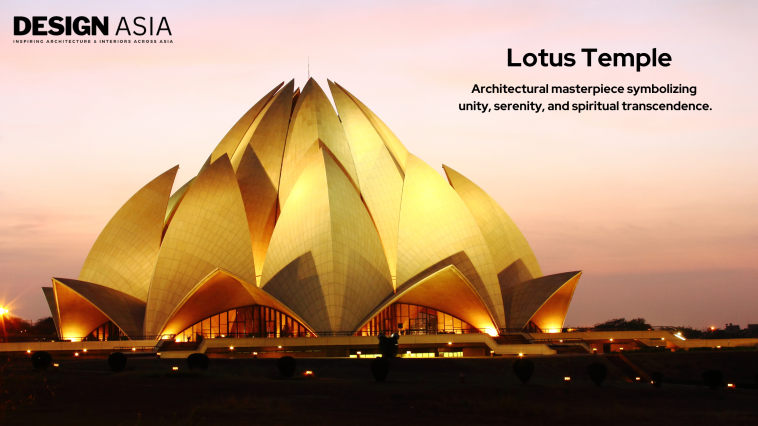The Lotus Temple, located in New Delhi, India, is an architectural gem renowned for its stunning design and serene ambiance. In this blog, we will explore the intricate details of the Lotus Temple’s architecture, its architect, and the profound spiritual significance that it holds for visitors from around the world.
Architectural Symbolism:
The Lotus Temple, officially known as the Bahá’í House of Worship, is a masterpiece of architectural symbolism. Designed by Iranian-Canadian architect Fariborz Sahba, the temple takes the form of a magnificent lotus flower, a revered symbol of purity, spirituality, and renewal in various cultures. Its pristine white marble petals gracefully embrace visitors, inviting them into a space of tranquility and reflection.
Design Philosophy: Unity and Harmony:
Fariborz Sahba’s design philosophy for the Lotus Temple embodies the principles of unity and harmony. The temple stands as a symbol of the Bahá’í faith’s core values, emphasizing the unity of all religions and the importance of spiritual oneness. The architectural elements, with their seamless integration and balance, reflect a vision of a world united in peace and understanding.
Structural Marvel:
The Lotus Temple’s architectural design showcases remarkable structural ingenuity. The temple consists of 27 marble-clad petals arranged in clusters of three, forming nine sides, which converge to create a central hall. This geometric precision not only enhances the visual appeal of the temple but also ensures its structural stability. The absence of any religious symbols on the exterior emphasizes its inclusive nature.
Innovative Construction Techniques:
The construction of the Lotus Temple presented unique challenges. Fariborz Sahba and his team employed innovative techniques to bring the architectural vision to life. The intricate marble cladding required meticulous craftsmanship, with each petal meticulously shaped and assembled. The structural framework, made of concrete and steel, ensures the temple’s longevity and stability.
Serenity in Spaces:
The interior of the Lotus Temple offers a serene sanctuary for meditation and prayer. The central hall can accommodate up to 2,500 people, with its soaring height and open layout creating an expansive sense of space. Natural light filters through the skylight at the apex of the lotus, casting a soft glow that enhances the tranquil atmosphere within.
Embracing Nature:
The Lotus Temple harmoniously blends with its natural surroundings. The temple’s location amidst sprawling gardens and reflective pools enhances its visual impact and provides a serene environment for visitors. The integration of nature into the design fosters a sense of connection and reverence for the natural world, further enhancing the spiritual experience.
Spiritual Significance and Global Appeal:
The Lotus Temple’s spiritual significance transcends religious boundaries. It welcomes people of all faiths and backgrounds to seek solace, meditate, and contemplate in its serene environment. The temple has become an emblem of peace, attracting millions of visitors from around the world who seek spiritual rejuvenation and a respite from the hustle and bustle of daily life.
Architect’s Legacy:
Fariborz Sahba’s architectural masterpiece has garnered global recognition and accolades. His visionary design for the Lotus Temple has been admired for its harmonious blend of aesthetics, spirituality, and structural integrity. Sahba’s commitment to creating spaces that foster unity and peace has left an indelible mark on the architectural world.
The Lotus Temple stands as a testament to the power of architecture to inspire and uplift the human spirit. Its exquisite design, blending symbolism, innovation, and spiritual harmony, offers visitors a profound experience of tranquility and introspection. The Lotus Temple’s enduring legacy as a beacon of unity and peace continues to resonate with people worldwide, leaving an everlasting impact on all who have the privilege to visit this architectural masterpiece.


